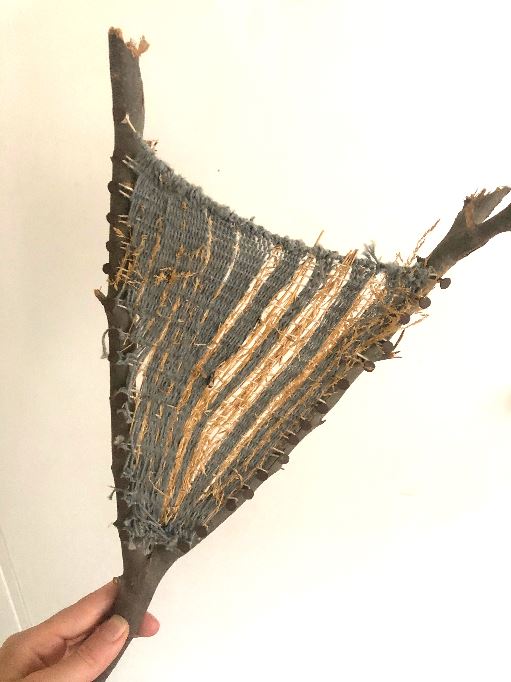As seasons change, take time to make new home decor
By ALDONA BIRD Newsroom@DominionPost.com
As the weather changes, and hikes and swimming become less pleasant, turning attention to finding joy in our homes becomes more important. Now is the time to consider re-decorating our living spaces for the fall and winter months, with their upcoming holidays.
If you like making things and beautifying your living space, consider making a tree-branch weaving using found materials plus a few things you probably already have in your closet.
This is a fun art project for youngsters or adults. One weaving looks great tucked in among other décor items or multiple can make an outstanding collection to display all together on a wall.

Materials needed to make a tree branch weaving:
- Forked tree branch
- Small nails
- Hammer
- String or yarn, colors of choice
- Dried grasses or other natural materials
- Scissors
Carefully tap small nails into both sides of the forked branch. Using nails with large flat heads is optimal, because they will keep your weaving from slipping off.
In weaving, the warp is strung first to create an immovable base for the weaving. The weft goes between the warp strings, and you have more flexibility and creative options when working with the weft.
To create the stable warp on this project, tie one end of the string to a top or bottom nail. Pull it tightly across to an opposite nail and loop it around. Keeping the string taut, continue looping back and forth across your branch frame to create a warp.
The warp should be tight — a loose warp will result in a saggy weaving.
When you start weaving the weft, let your creativity flow! Weave in dried grasses or other natural materials, use multiple colors of string, or create a monotone branch weaving.
The weft should go under one warp strand and over the next all the way down. When you reach the top or bottom, alternate which warp strand the weft goes over and under. You can create patterns by intentionally going over or under two or more strands.
Keep in mind that the larger the gap, the weaker your weaving will be. Since this is decoration rather than a functional weaving, don’t worry too much about taking artistic liberties which might not produce the strongest result — look out more for bagging or loose threads that don’t look great.
To secure the ends of string after weaving, tie a small knot over a warp string. Try to keep knots as inconspicuous as possible.
Tree branch weavings can be fun not only as unique décor or art projects, but also as a way to commemorate a place or trip: going on a camping trip this fall to immerse yourself in the changing leaves? Grab a branch and some dried grasses, etc., and when you get home weave a keepsake.




